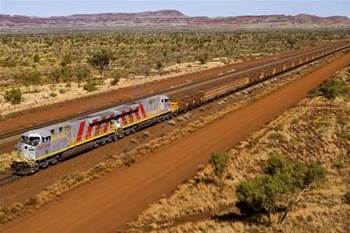Rio Tinto has made major progress in the automation of its pit-to-port train system with around 20 percent of all train kilometres now completed in autonomous mode.
The miner said that while the train was operating autonomously in these periods, drivers remained on-board to “manage the remaining safety and reliability systems” and to drive the train the remaining distance.
“Improvements to system performance continue and the project is on schedule to be completed by the end of 2018,” Rio Tinto said in a statement.
The autonomous trains project, known as AutoHaul, is the final piece of the automation puzzle envisioned as part of Rio Tinto’s ambitious mine of the future program.
Unlike haul truck and drill automation, however, AutoHaul has run into problems, specifically in the development of software that will enable the trains to be fully driverless.
The miner was forced to temporarily put the project on hold while it sorted out the software issues, but resumed implementation this year.
Rio Tinto first revealed the ambitious US$518 million AutoHaul project in early 2012. At the time it had bullishly predicted having its first train active in 2014, and completing the entire project by the end of 2015.
When complete, it is expected that 180 autonomous trains will run on Rio Tinto’s 1500km Western Australian rail network, which connects its Pilbara iron ore mines and three ports.




.png&h=140&w=231&c=1&s=0)





















